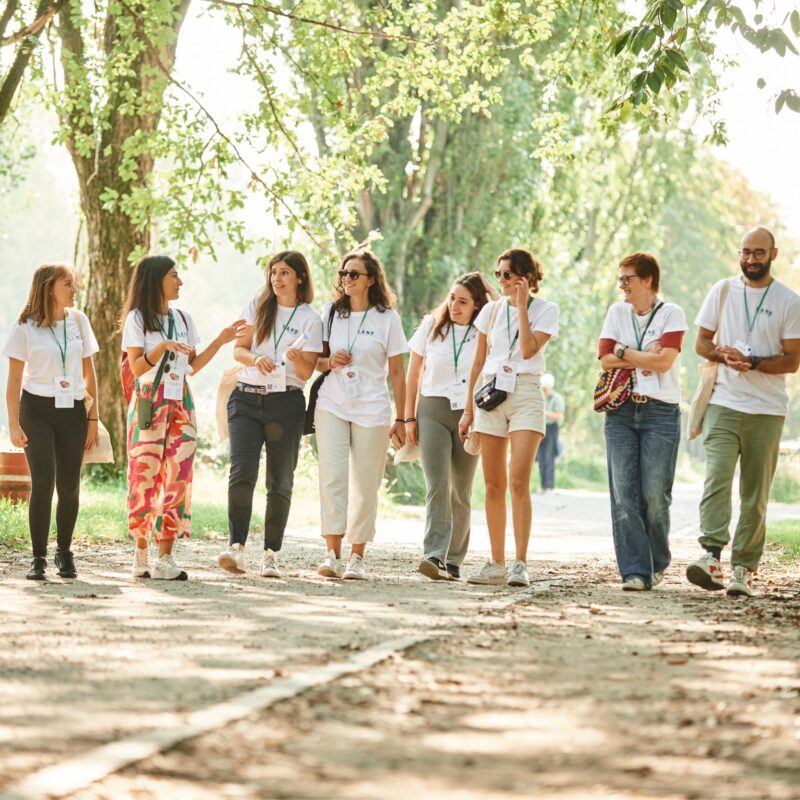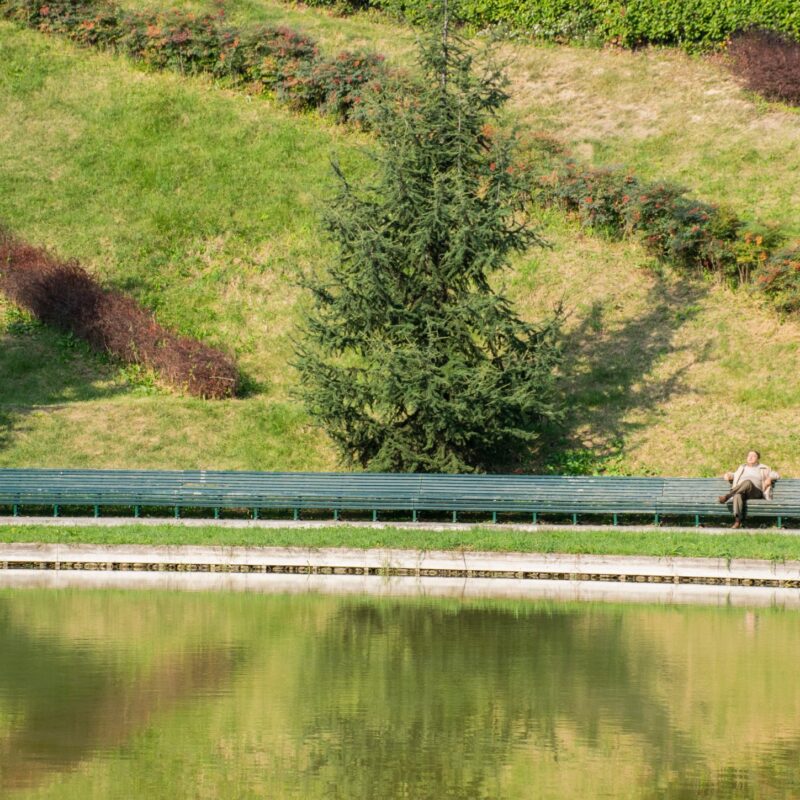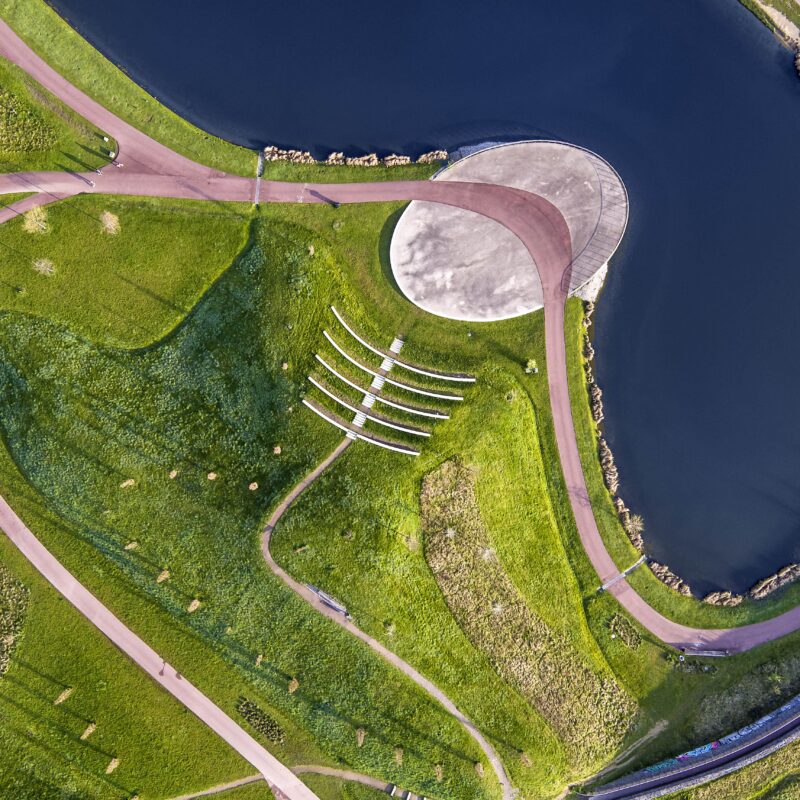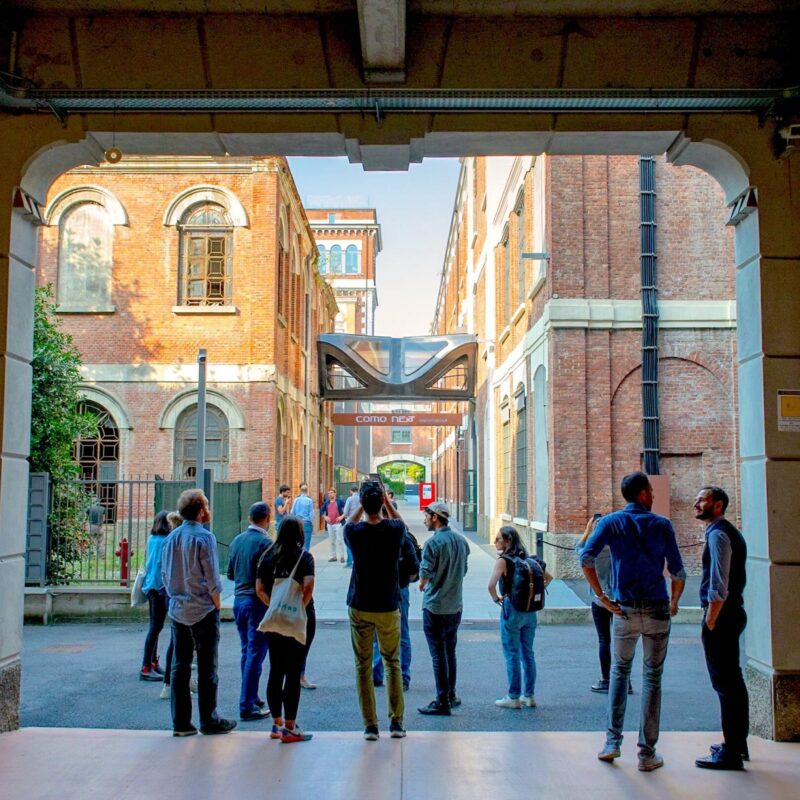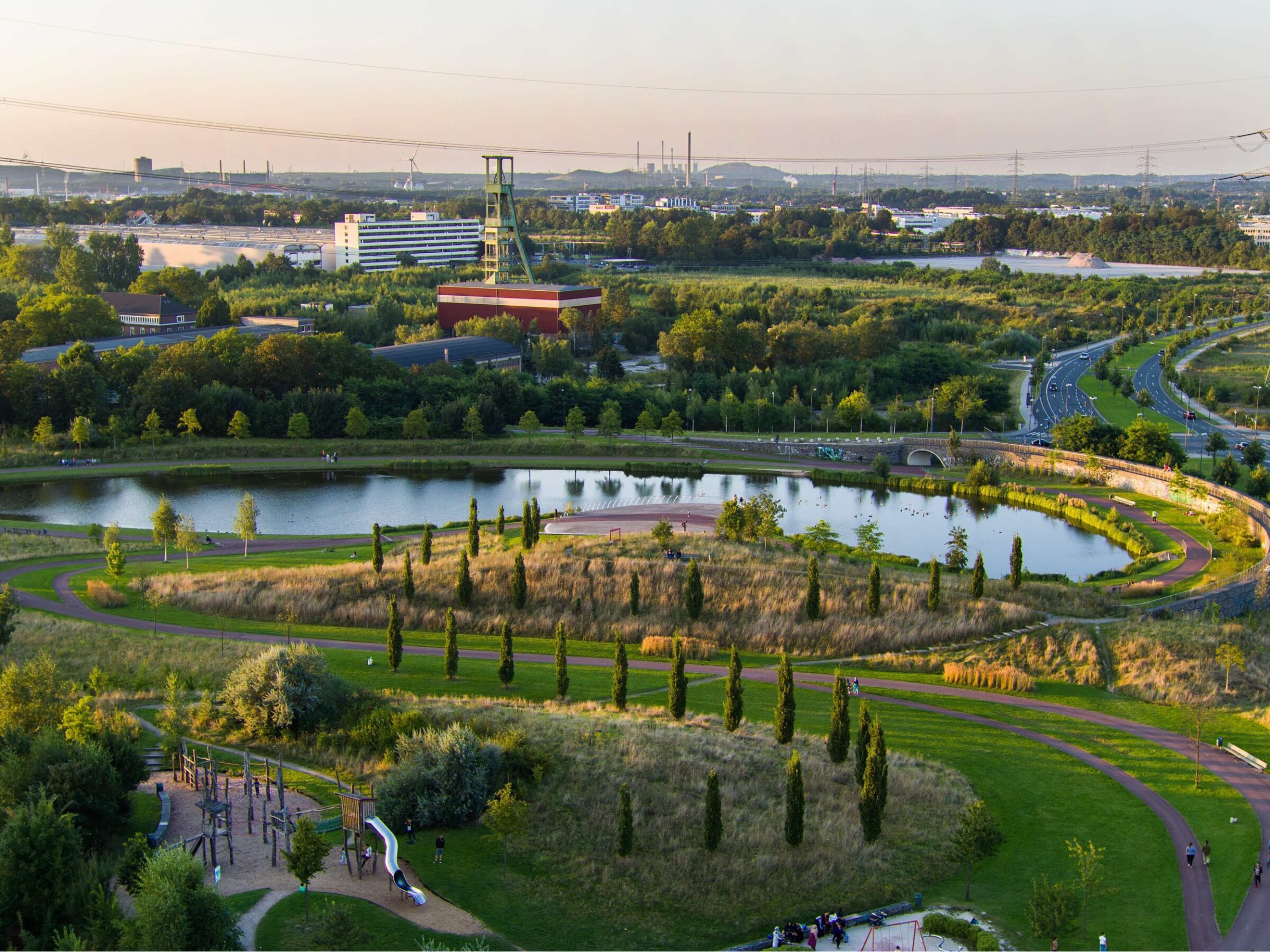
Krupp Park Five Hills
Germany
The Krupp Park “Five Hills” is the fourth largest local recreation area in Essen’s urban space and is exemplary for developing large green-blue infrastructures through the revitalisation of inner-city brownfield sites of the Ruhr metropolis. It plays an important role both in improving urban climate and promoting sustainable regeneration.
Client
City of Essen, Grün und Gruga Essen GGE
Geography
Status
Year
2006-2012
Area Size
12,5 ha
Partners
Asmus + Prabucki Ingenieure, Essen (landscape structure, water surface); Ingenieurberatung Bühl und Becker, Essen (engineering structures); Dahlem Beratende Ingenieure, Essen (water system); TÜV Nord, Essen (noise expertise); Heinrich Walter Bau/Eurovia, Borken/Bottrop (landscaping, water system construction); Karl-Heinz Peters, Essen (civil engineering); Sieg GmbH, Essen + Essener Arbeit und Beschäftigungsgesellschaft (plants/paths/play areas/furnishings)
The Krupp Park “Five Hills” is the fourth largest local recreation area in Essen’s urban space and is exemplary for developing large green-blue infrastructures through the revitalisation of inner-city brownfield sites of the Ruhr metropolis. It plays an important role both in improving urban climate and promoting sustainable regeneration.
Client
City of Essen, Grün und Gruga Essen GGE
Geography
Status
Year
2006-2012
Area Size
12,5 ha
Partners
Asmus + Prabucki Ingenieure, Essen (landscape structure, water surface); Ingenieurberatung Bühl und Becker, Essen (engineering structures); Dahlem Beratende Ingenieure, Essen (water system); TÜV Nord, Essen (noise expertise); Heinrich Walter Bau/Eurovia, Borken/Bottrop (landscaping, water system construction); Karl-Heinz Peters, Essen (civil engineering); Sieg GmbH, Essen + Essener Arbeit und Beschäftigungsgesellschaft (plants/paths/play areas/furnishings)
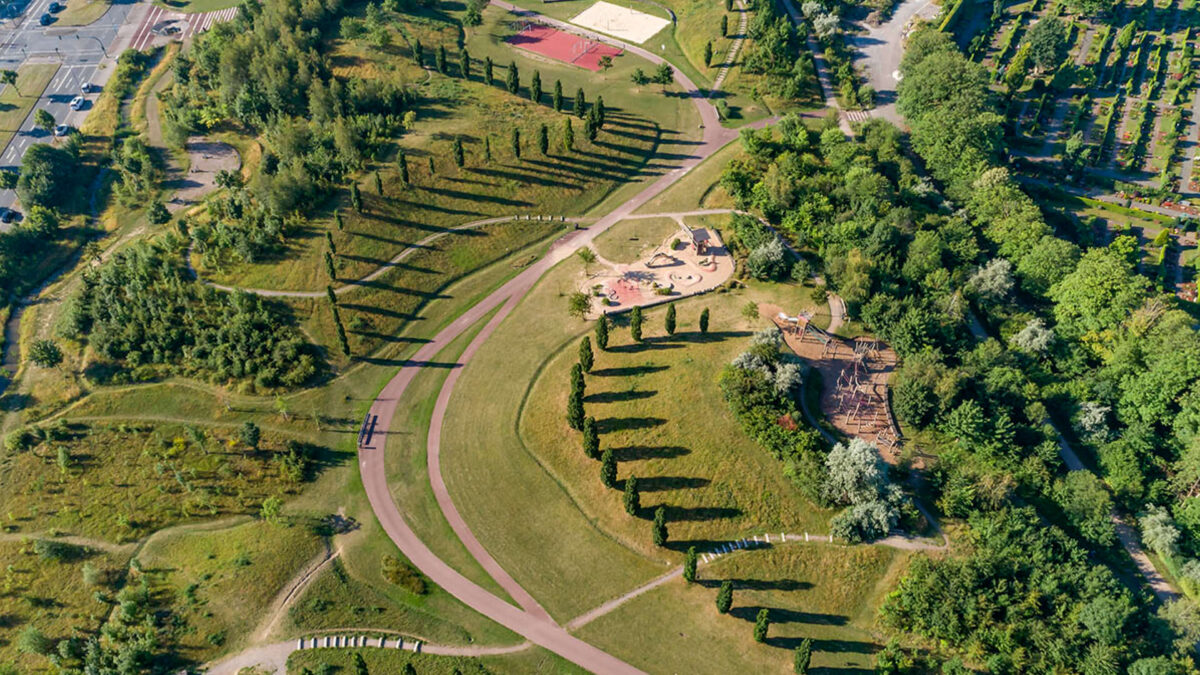
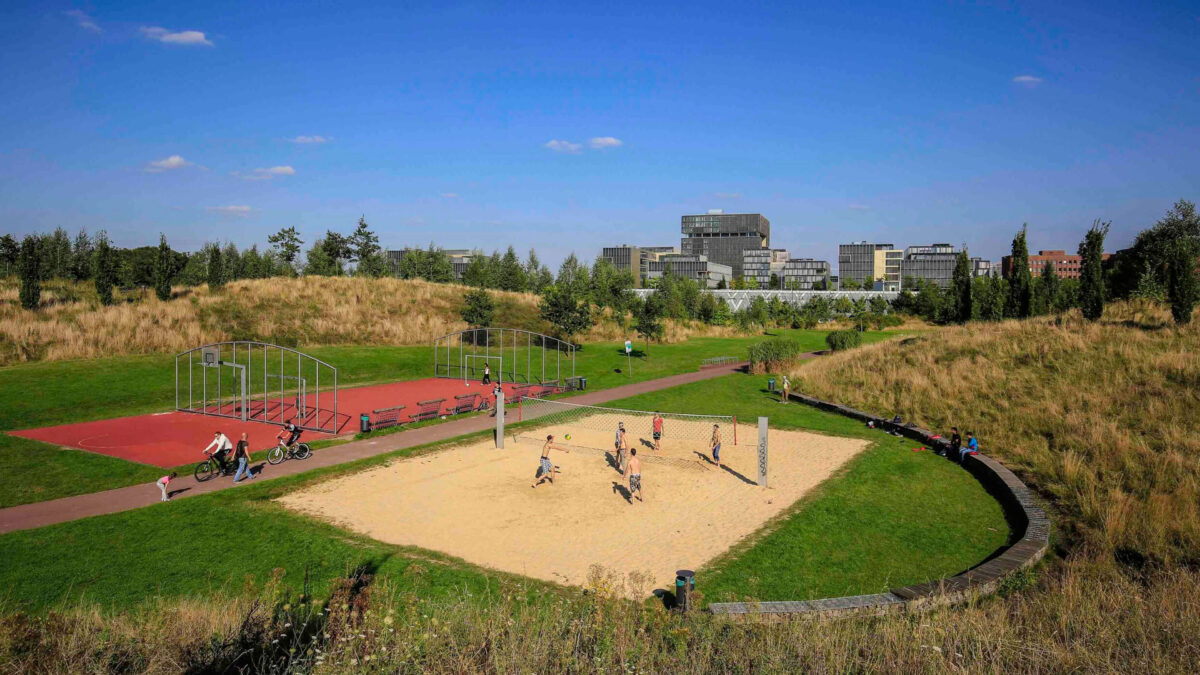
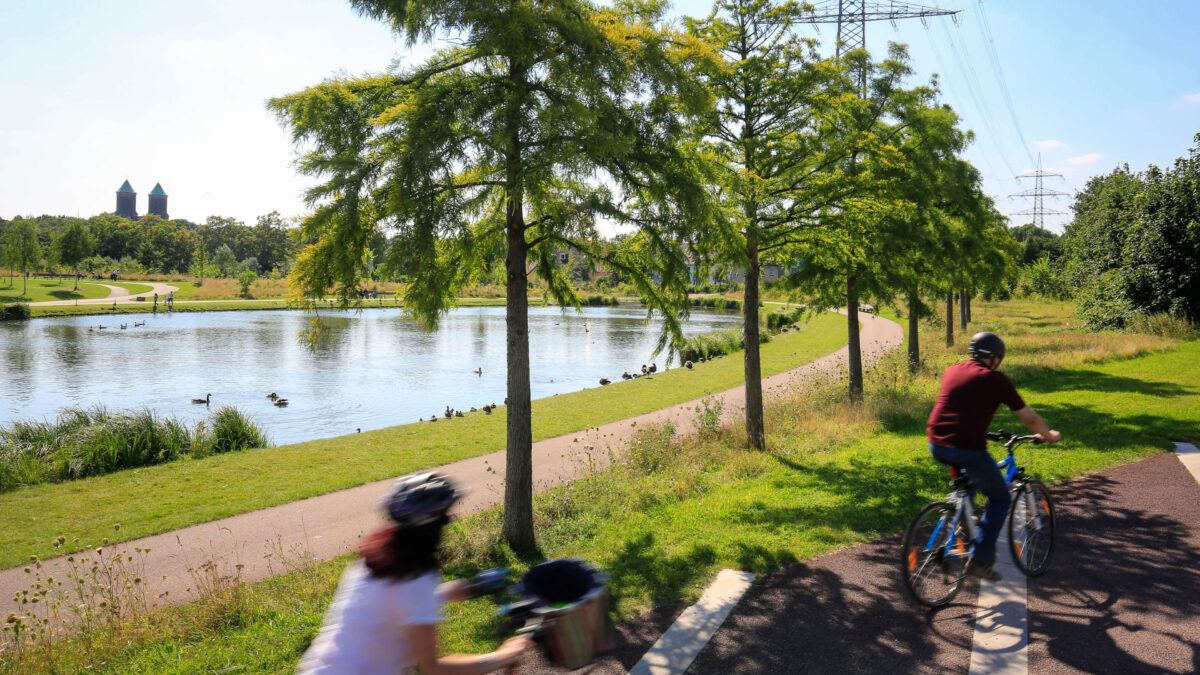
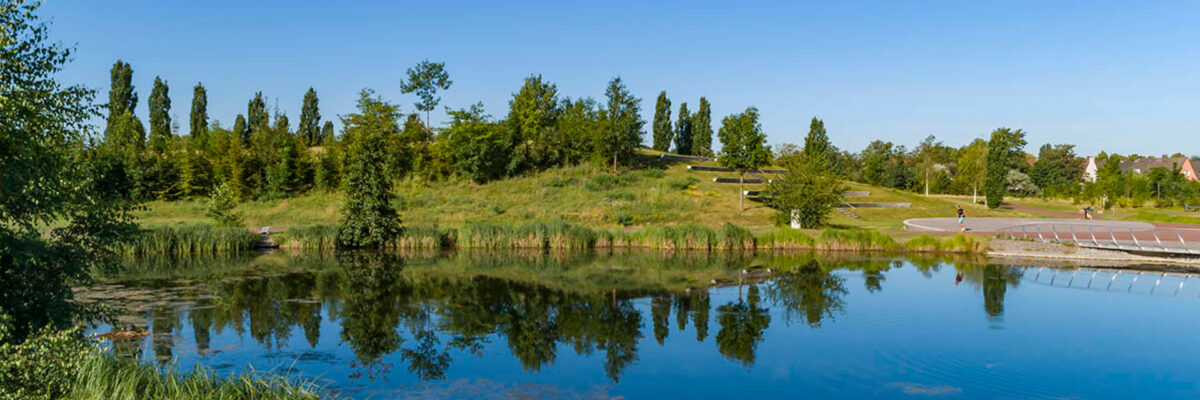
Located on the former site of the Krupp cast steel factory, the park transforms a vast zone of industrial wasteland which has been inaccessible to the public for over a century, reestablishing the connection between the Altendorf neighbourhood and the city centre.
Divided into a northern and southern part, Krupp-Park has a combined area of 220.000m2 in total, marking the beginning of the urban development of the green Krupp Belt. It provides a common green centre to the surrounding city districts, while improving the urban climate, featuring intelligent drainage and rainwater management, and offering relief during increasing heatwaves.
400,000m3 of excavated soil was reused in the park so that the park’s characteristic five hills could be created despite the soil contamination from the former industry. The park’s vegetation volume of over 15,500 trees and a total woodland of 13,5 hectares provide cooling evaporation and significantly contribute to the city’s resilience.
The five hills form a wide valley flowing into a 10.000m2 lake located at the northern entrance to the park. More than just an aesthetic feature, the lake acts as a rainwater reservoir, collecting the water from the roofs of the neighbouring ThyssenKrupp district and the surrounding areas. From the roofs, rainwater reaches the park via natural open channels and a specially developed culvert, combining functionality with the aim of making sustainability visible. Apart from being used for irrigation, the lake water is challenged into a tributary of the Emscher River to support the ecology of the river system. A balance between low-tech solutions and hight-tech engineering, thus creates resilient synergies capable of withstanding environmental and social challenges, demonstrating how thoughtful technology choices can contribute to the project’s long-term durability and sustainability.
15,545 Trees
For a total of 13,5 ha of woodland, providing cooling evaporation and hosting biodiversity.
400,000m3 Moved Soil
For the creation of five hills, regenerating a contaminated former industrial area.
10.000m2 Lake
With intelligent rainwater management and irrigation system.
